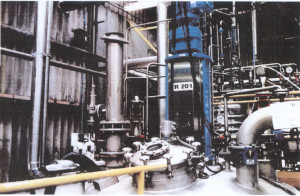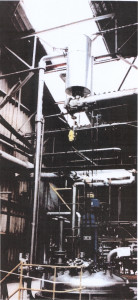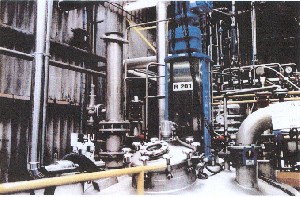The safety disc on a reactor broke during an oxidation reaction at a chemical plant. The reaction medium emitted from the gas washing towers, i.e. a soda effluent (pH = 10) loaded with cyanide (6 ppm), partially vaporised and destroyed 4 m² of asbestos cement roof tiles. A safety perimeter was set up and a nearby sports centre had to be evacuated for 30 minutes. Point-specific air quality measurements revealed no trace of cyanide, and neither did the analysis of effluent remaining inside the reactor; the oxidation reaction had certainly been completed during the accident. Consequences were limited to minimal property damage (€8,000). Steam-heated in a double enclosure, the reactor had been equipped with a manometer, a check valve and a rupture disc assembled in parallel. Shortly before the accident, technicians monitoring the reaction had recorded a temperature of 160°C for a 1.2-bar manometric pressure; they had also retightened the bolts on the manhole, which was leaking slightly. Not specifically trained to operate pressure instruments, these technicians failed to identify the early warning signs of this accident: inconsistent temperature and pressure readings, presence of a leak. The manometer was disassembled and evaluated; the presence of gum was observed to form a plug on the measurement device, along with solid deposits in the elbow of a pipe connecting the reactor dome to the manometer. Since the manometer used for the operation had been clogged, technicians had no access to an accurate pressure reading in order to control reactor heating. Moreover, the reactor could not undergo decompression prior to bursting of the rupture disc, given that the check valve had been calibrated at a pressure higher than the rupture disc bursting pressure. Remedial measures were adopted in order to prevent recurrence of this type of accident, i.e.: safety system design verification on all reactors capable of experiencing a pressure rise; and enhanced personnel awareness via training sessions devoted to equipment safety. In time, works were performed to route all vent exhaust from safety devices into a collection tank.
Download the detailed report in .pdf format (207 Kb)






